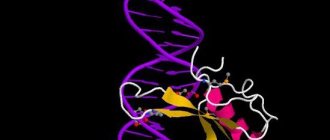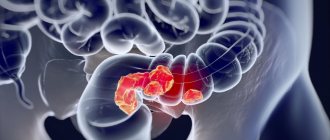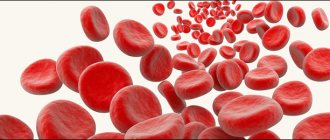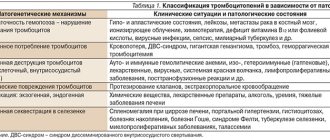Astrocytoma is one of the most common brain tumors. The inside of the tumor often contains cysts, which can grow to large sizes and cause compression of the brain matter.
Benign astrocytomas, located in an accessible location, give a better prognosis for life expectancy than high-grade astrocytomas or benign astrocytomas, located in a location inaccessible to the surgeon and having a large tumor size. The earlier a tumor is detected, the better the prognosis for its treatment.
At the Yusupov Hospital they deal with the diagnosis and treatment of astrocytes. The hospital is equipped with innovative diagnostic equipment that allows you to receive all diagnostic services.
Etiology of cerebral astrocytoma
The exact causes of the tumor are still being investigated by scientists. However, it is possible to identify a complex of factors that can provoke the disease. For a long time, scientists believed that astrocytes perform an exclusively supportive function in relation to the neurons of the central nervous system. However, recent research shows that astrocytes also perform a protective function, as they prevent injury to neurons and absorb chemicals resulting from their activity.
The trigger for the appearance of a tumor in the brain can be the patient’s genetic predisposition to cancer. The causes of the disease also include viruses with a high level of oncogenicity and unfavorable environmental conditions. Professional activity can also play a decisive role in the appearance of a tumor. For example, workers who work in oil refining and rubber production are at risk of developing brain astrocytoma.
Radiation exposure may also be a risk factor. It has been proven that in patients with other forms of cancer who have undergone radiotherapy, the risk of developing a tumor is several times higher. As for the patient’s age, astrocytoma can appear in both older people and children. However, the average age of patients at the time of diagnosis is usually around 9-10 years.
Forecast
After surgical removal of nodular forms of astrocytoma, long-term remission (more than ten years) can occur. Diffuse astrocytomas are characterized by frequent relapses, even after combined treatment.
With glioblastoma, the average life expectancy of a patient is one year, with anaplastic astrocytoma of the brain - about five years.
With other types of astrocytomas, the average life expectancy is much longer; after adequate treatment, they return to a full life and normal work activity.
General symptoms of astrocytoma
As for the general symptoms, they are often caused by the toxic effects of tumor cells and increased intracranial pressure. General symptoms also appear:
- convulsions;
- Strong headache;
- weakening of concentration and memory;
- speech disorders;
- weakened vision;
- unsteady gait;
- nausea, vomiting.
The patient may also experience hallucinations, problems with writing and fine motor skills. Patients often experience changes in character and frequent mood swings. General symptoms of the disease can be either constant or paroxysmal. In many ways, their manifestation depends on which particular area of the brain the astrocytoma appears in.
Classification by cellular structure
Astrocytomas can be divided into groups according to their predominant cell type. The basis for dividing astrocytomas into “ordinary” and “special” is the significant difference in the clinical course and the significantly more favorable nature of the latter, which does not depend on the gradational degree within this group (they also more often occur in youth). The current understanding is that pilocytic and microcystic cerebellar astrocytomas are the same tumors as fibrillary astrocytomas, but only with a different location.
Focal symptoms of astrocytoma
As for the focal symptoms of the disease, they are caused by compression and destruction of the cerebral areas located near it by the tumor. Namely, if the astrocytoma is located in the frontal lobe, the patient complains of frequent mood swings and changes in character. Damage to the temporal lobe of the brain is accompanied by difficulty in coordination, memory and speech. A tumor in the parietal lobe of the brain causes difficulties with writing and motor skills. If the astrocytoma is located in the occipital region, the patient complains of hallucinations and visual disturbances, in the cerebellum - of difficulties maintaining balance.
Prevention
Taking into account how many causes cause the appearance of astrocytoma, as well as how many people have sought medical help in recent years, it is necessary to pay attention to measures to prevent this disease.
Such preventive methods include:
- Strengthening immune defense.
- Elimination of stressful situations.
- Accommodation in environmentally safe areas.
- Proper nutrition. It is important to exclude smoked and fried foods, fatty foods, and canned food. Add more steamed dishes, fruits, and vegetables to your diet.
- Rejection of bad habits.
- Preventing head injuries.
- Regular medical examinations.
If a brain astrocytoma is detected, do not despair and give up. It is important to remain optimistic, believe in a good result, and have a positive attitude. Only with such a positive attitude and faith can you defeat oncology.
Diagnosis of brain astrocytoma
To make a diagnosis, doctors use a set of techniques. Tomography helps to obtain the most accurate and reliable information about the tumor:
- magnetic resonance imaging: capable of recognizing the degree of malignancy of a tumor, since during its examination the areas feeding the tumor are illuminated with bright and saturated light;
- computer: allows you to obtain a layer-by-layer image of the brain, which makes it possible to identify the structure and location of the tumor;
- positron emission: involves the injection into a vein of a small amount of radioactive glucose, which will accumulate in the tumor area.
The doctor can make an accurate diagnosis after performing a biopsy. To do this, a small piece of affected tissue is taken from the patient for examination. A biopsy is performed using surgical methods or endoscopy. The doctor can plan the operation in detail after angiography. The procedure involves the introduction of a special dye, which makes it possible to identify the vessels feeding the tumor. A neurological examination is used as an auxiliary diagnostic technique.
Diagnosis: types of tumor
The structure of malignant cells divides astrocytomas into two groups:
- fibrillar, gemistocytic, protoplasmic.
- piloid (pilocytic), subepidemic (glomerular), cerebellar microcystic.
Astrocytoma has several degrees of malignancy:
- first degree of malignancy - this type of benign tumor grows slowly, is small in size, is limited to healthy areas of the brain by a kind of capsule, and rarely affects the development of neurological deficits. The tumor is represented by normal astrocyte cells, which develop in the form of a nodule. A representative of such a tumor is piloid astrocytoma, pilocytic. Affects children and adolescents more often;
- second degree of malignancy - the tumor grows slowly, the cells begin to differ from normal brain cells, more common in young people aged 20 to 30 years. A representative of this degree of malignancy is fibrillar (diffuse) astrocytoma;
- third degree of malignancy - anaplastic astrocytoma. Grows rapidly, tumor cells are very different from normal brain cells, the tumor has a high level of malignancy;
- fourth degree - malignant glioblastoma, the cells do not look like normal brain cells. It affects important centers of the brain, grows quickly, and often it is impossible to remove such a tumor. It affects the cerebellum, the cerebral hemispheres, and the area of the brain responsible for the redistribution of information from the sensory organs - the thalamus.
Over time, tumor cells of the first and second degrees degenerate and turn into cells of the third and fourth degrees of malignancy. Transformation of a tumor from a benign to a malignant neoplasm most often occurs in adults. Benign brain tumors can be as life-threatening as malignant tumors. It all depends on the size of the formation and the location of the tumor.
Treatment of brain astrocytoma
Treatment tactics for cerebral astrocytoma are selected depending on the results of diagnostic studies. The following methods are used to treat the disease:
- Surgery. Surgery is chosen to remove low-grade astrocytoma. Since in some cases complete removal of the tumor is impossible, doctors may additionally prescribe a course of radiation therapy. However, in the early stages, the use of auxiliary techniques is not always effective, so doctors usually wait for new symptoms to appear. If, due to the large size of the tumor, it is impossible to completely remove it, doctors concentrate on reducing its size.
- Radiation therapy. This technique is aimed at damaging cells involved in cell nutrition. Healthy brain tissue is not affected. Radiation therapy is usually performed in courses. It is carried out in two ways: the internal impact technique involves the introduction of radioactive materials into the damaged tissue, and the external impact tactics involve the location of the radiation source outside the body.
- Chemotherapy. This technique involves prescribing special medications to the patient that can destroy tumors. After such drugs enter the blood of a sick person, they begin to intensively destroy the areas affected by the tumor. The disadvantage of chemotherapy is that healthy cells often die along with damaged cells. Today, chemotherapy drugs are produced in the form of injections, tablets, and catheters.
- Radiosurgery. Radiosurgery is performed as follows: diseased cells are exposed to direct radio radiation, after which they die. The advantage of this technique is the ability to make calculations for the exact effects of radiation using a computer program. In this way, it is possible to ensure that precise rays are directed only at the tumor, and not at healthy areas of the brain.
Publications in the media
Astrocytomas are a large and most common group of primary tumors of the central nervous system, differing in location, sex and age distribution, growth pattern, grade of malignancy and clinical course. All astrocytomas are of “astroglial” origin. Incidence: 5–7:100,000 population in developed countries.
For all astrocytomas, a universal grading system (WHO) is used according to the histological criterion of “grade of malignancy” • Grade 1 (piloid astrocytoma): there should be no sign of anaplasia • Grade 2 (diffuse astrocytoma): 1 sign of anaplasia, more often nuclear atypia • Grade Grade 3 (anaplastic astrocytoma): 2 signs, most often nuclear atypia and mitoses • Grade 4 (glioblastoma): 3–4 signs: nuclear atypia, mitoses, vascular endothelial proliferation and/or necrosis.
There are a number of clinicopathological groups of astrocytomas.
Diffuse-infiltrative astrocytoma. This concept unites several types of tumors of varying degrees of malignancy.
• Diffuse astrocytoma (WHO-2) - 10-15% of all brain astrocytomas, peak incidence 30-40 years, men/women - 1.2:1; are more often located supratentorially in the cerebral hemispheres. Clinical picture. Most often, these tumors manifest as an episyndrome, focal neurological deficit, and signs of increased ICP appear at a late stage of disease development. Diagnostics. Tumors have characteristic CT and MRI semiotics. Treatment. Tactics: tumor removal or observation/symptomatic therapy (the decision can be made only after consultation with a neurosurgeon). The previously popular tactic - biopsy + radiation therapy - has no advantage over “observation”. Prognosis: The average life expectancy after surgery is 6–8 years with marked individual variations. The clinical course of the disease is mainly influenced by the tendency of these tumors to malignant transformation, which is usually observed 4–5 years after diagnosis. Clinically favorable prognostic factors are young age and “total resection” of the tumor. Among diffuse astrocytomas, a number of histological variants are distinguished •• Fibrillar astrocytoma is the most common variant, consisting mainly of fibrillar tumor astrocytes. Nuclear atypia is a diagnostic criterion. Mitoses, necrosis, and endothelial proliferation are absent. The cell density in the specimen is low to moderate •• Protoplasmic astrocytoma is a rare variant, consisting primarily of tumor astrocytes with a small body and thin processes. The cell density in the preparation is low. Characteristic features are mucoid degeneration and microcysts •• Gemistocytic astrocytoma. This variant is characterized by the presence of a significant fraction of gemistocytes in fibrillary astrocytoma (usually more than 20%). A gemistocyte is a variant of an astrocyte with a large, angular, misshapen eosinophilic body.
• Anaplastic astrocytoma (WHO-3) accounts for 20-30% of all brain astrocytomas, peak incidence 40-45 years, men/women -1.8:1; are most often located supratentorially in the cerebral hemispheres. At the moment, the dominant point of view is that anaplastic astrocytoma is the result of malignant transformation of diffuse astrocytoma. Its pathomorphology is characterized by signs of diffuse infiltrative astrocytoma with severe anaplasia and high proliferative potential. The clinical picture is in many ways similar to diffuse astrocytoma, but signs of increased ICP are more common, and there is a more rapid progression of neurological symptoms. Diagnosis: tumors do not have characteristic CT and/or MRI semiotics and can often appear as diffuse astrocytoma or glioblastoma. Treatment: at the moment, the standard treatment algorithm is combination treatment (surgery, radiation therapy, polychemotherapy). Forecast. The average life expectancy after surgery and adjuvant treatment is about 3 years. The clinical course of the disease is mainly influenced by transformation into glioblastoma, which is usually observed 2 years after diagnosis. Clinically favorable prognostic factors are young age, “total resection” of the tumor, and good preoperative clinical status of the patient. The presence of an oligodendroglial component in the tumor may increase survival to >7 years.
Glioblastoma (GBM) and its variants (WHO-4). It is the most malignant of astrocytomas and accounts for about 50% of all astrocytomas of the brain, peak incidence 50–60 years, men/women - 1.5:1; most often located supratentorially in the cerebral hemispheres. There are primary (more often) and secondary GBM (as a result of malignancy of diffuse or anaplastic astrocytoma). Its pathomorphology is characterized by signs of diffuse infiltrative astrocytoma with severe anaplasia, high proliferative potential, signs of endothelial proliferation and/or necrosis. Clinical picture. Primary GBM is characterized by a short medical history, dominated by nonspecific neurological symptoms and rapidly progressive intracranial hypertension. In secondary GBM, the clinical picture is largely similar to anaplastic astrocytoma. Diagnostics. The tumor has characteristic CT and MRI semiotics; differential diagnosis is usually carried out with metastasis and abscess. Characteristic is the invasive growth of the tumor along long conductors (GBM in the form of a “butterfly” when growing through the corpus callosum). Treatment. At the moment, the standard treatment algorithm is combination treatment (surgery and radiation therapy; the role of polychemotherapy in increasing survival in GBM has not yet been reliably proven, and the need for its implementation is considered only in cases where all other treatment methods have been carried out and turned out to be ineffective (“ therapy of despair." Prognosis: The average survival after surgery and adjuvant treatment is about 1 year. Clinical favorable prognostic factors are similar to those for anaplastic astrocytoma.
In addition to the typical glioblastoma multiforme, the following histological variants are distinguished: • Giant cell glioblastoma is characterized by a large number of giant, ugly multinucleated cells • Gliosarcoma is a two-component malignant tumor with foci of both glial and mesenchymal differentiation.
Pilocytic (piloid) astrocytoma is a tumor of childhood, characterized by a relatively “demarcated” growth pattern (in contrast to diffuse astrocytomas) and has characteristic features of localization, morphology, genetic profile and clinical course. It belongs to the lowest (1st degree of malignancy according to the WHO classification for tumors of the central nervous system) and has the most favorable prognosis. More often occurs before the age of 20 years. The most common localization is the cerebellum, visual pathways, and brain stem. The clinical picture is characterized by a very slow increase in both focal (depending on the location of the tumor) and general cerebral symptoms with good adaptation of the body. Particularly characteristic is the slow increase in occlusive hydrocephalus with tumors of the cerebellum and brainstem. Diagnostics. The tumor has characteristic CT and MRI semiotics, which allows, together with the clinical picture, to make a diagnosis before surgery. The standard preoperative examination of such patients is contrast-enhanced MRI. Treatment is surgical; the goal of the operation is “total removal” of the tumor, which is often impossible due to its location (brain stem, hypothalamus). Forecast. Survival of patients is often more than 10–15 years, and therefore exact survival rates do not exist due to difficulties in analyzing such a long follow-up. Note. Among piloid astrocytomas (usually hypothalamic), there is a small subgroup of tumors with locally pronounced “invasive growth” and a tendency to metastasize in the subarachnoid spaces.
Pleomorphic xanthoastrocytoma is a rare tumor (less than 1% of all astrocytomas), occupying an intermediate position in the series of “malignancies” due to its dual behavior (WHO-2). In some cases, the tumor is well demarcated and slowly growing with a favorable prognosis. At the same time, cases of its malignant transformation with an unfavorable prognosis have been described. Clinical picture. Most often, the tumor occurs at a young age and manifests itself as an episyndrome. Characteristic is a superficial subcortical localization and a tendency to involve the adjacent meninges in the pathological process (“meningo-cerebral” volumetric process). Diagnostics: CT/MRI. Treatment is surgical; the goal of the operation is “total removal” of the tumor, which is often achievable. Forecast. 5-year survival rate is 81%, 10 - 70%. An independent prognostic factor is increased (more than 5 mitoses in a high-power field) mitotic activity. Most tumors with an aggressive course are characterized by this indicator.
Abbreviations. GBM - glioblastoma
ICD-10 • D43 Neoplasm of uncertain or unknown nature of the brain and central nervous system • C71 Malignant neoplasm of the brain
Application. Genetic aspects • In astrocytomas, 2 types of damaged genes have been registered: •• dominantly inherited oncogenes, protein products of the gene accelerate cell growth; typical damage is an increase in the gene dose due to amplification or activating mutation •• tumor suppressors, protein products of the gene inhibit cell growth; typical damage is physical loss of a gene or an inactivating mutation • Mutations: •• TP53 gene (*191170, 17p13.1, Â) •• MDM2 (164585, 12q14.3–12q15, Â) •• CDKN1A (*116899, 6p, Â ) •• CDKN2A and CDKN2B (9p21) •• CDK4 and CDK6 (12q13–14) •• EGFR (*131550, 7, Â).
Prognosis of brain astrocytoma
The prognosis for the patient depends on several factors: the degree of malignancy, cases of relapse, which are most often observed in the first three years after surgery, as well as frequent changes in the stages of tumor development. For patients in whom the first stage of the disease is detected, the prognosis is generally favorable. However, even in this case, the patient’s life expectancy is significantly reduced - he can live about 9-10 years. For the second stage of the disease this figure is 5 years, for the third - 2-5 years, for the fourth - no more than one year.
Treatment of astrocytoma involves the use of complex techniques, so many patients experience various complications upon completion. Namely, after treatment of the tumor, speech disorders, disorders of the nerve endings that are responsible for touch, perception and taste buds, and impaired motor and support functions may occur.
Severe complications can be avoided if the disease is detected in time, at the first stage of its development. Timely treatment will help to significantly improve the quality of life and increase its duration. It is best not to delay treatment, as the tumor may begin to grow quickly. Doctors also advise people whose relatives have had cancer to undergo regular medical examinations and also avoid working in hazardous work environments.
Current Treatment Options
Astrocytoma is a formidable pathology that requires complex and long-term treatment. New technologies and equipment are used for successful therapy. The treatment regimen is individual, depending on the shape, size, and location of the tumor. The main methods of treating astrocytoma:
- The surgical method is based on eliminating the affected area without harm to healthy cells. It is effective at the first stage. The operation is considered one of the most dangerous, albeit popular methods. The use of the latest microscopic technology reduces the risk of injury. The marking of the tumor, which microsurgeons focus on, is done by a phantom. To control speech and coordination, the patient is not allowed to sleep. Complete resection of all affected tissue is not always possible, so the operation is complemented by radiation therapy.
- Radiosurgery involves removing a tumor using radio rays under the constant control of a tomograph. All calculations are carried out by a computer program that allows you to direct a beam of rays strictly to a specific location.
- Radiation therapy is carried out by giving radiation exposure after surgery. Used as a separate course or in parallel with chemotherapy. Radiation therapy can be:
- External, when the radiation is directed from an external source.
- Internal, in which radioactive components are placed inside the body, near the source.
Treatment is carried out in courses, in several stages.
The side effects of such a complex treatment are impressive. The patient may completely or partially lose his vision, so at the same time measures are taken to restore it. Musculoskeletal functions are also impaired, and the patient is often forced to use a wheelchair. There are problems with speech, taste, and touch.
It is important not to forget that the danger of oncology lies in its relapses: even successful therapy does not exclude the recurrence of the pathology. Astrocytoma rarely goes away without any health consequences.
Differential diagnosis
Acute ischemic cerebrovascular accident
Territorial ischemic stroke, resulting from thrombosis or embolism, leads to the occurrence of cytotoxic edema strictly within the blood supply of the corresponding artery. Astrocytoma does not comply with the anatomical topography of the blood supply zones. A stroke in the first hours of its occurrence sharply limits diffusion and is manifested by an increased MR signal on DWI, and the infarction zone accumulates contrast with intravenous enhancement from about the 3rd day and can be contrasted up to the 3rd week with a characteristic gyral type. When performing MR angiography in a stroke with the presence of arterial thrombosis, a loss of signal from the blood flow is visualized.
The area of ischemic stroke has similar T2 and Flair MR signal characteristics to diffuse astrocytoma (arrowheads in Fig. 193). In the subacute phase, the area of ischemic stroke accumulates the contrast agent according to the gyral type (arrows in Fig. 194). On DWI, the area of ischemic infarction has a significantly higher MR signal than the area affected by fibrillary astrocytoma (arrows in Fig. 195). In the case of a territorial infarction against the background of atherothrombosis or embolism, MRA will visualize the absence of blood flow through the main artery (arrow head in Fig. 195).
With dynamic MRI and CT observation, the stroke zone evolves into an area of encephalomalacia, and subsequently into a cyst filled with cerebrospinal fluid and a glial shaft along the periphery. Fibrillary astrocytoma, when assessed over time, increases the size of the affected area and acquires the signs of anaplastic astrocytoma. Fibrillary astrocytoma does not accumulate contrast, however, it can limit diffusion, creating difficulties in differential diagnosis with infarction in the first 3 days.
Fibrillary astrocytoma in the right temporal and insular lobe in the form of an area without clear contours, simulating a stroke (arrowheads in Fig. 196), does not accumulate contrast agent (Fig. 197) and persists for a long time without dynamics. 1-2 months after an ischemic stroke, an area of encephalomalacia will be visualized in the affected area, resulting in cystic-glial changes (arrows in Fig. 198).
Anaplastic astrocytoma
Anaplastic astrocytoma at the macroscopic level has pronounced perifocal edema, mass effect and accumulates the contrast agent quite well, and sometimes hemorrhages into the tumor occur. In some cases, it is extremely difficult to make a differential diagnosis due to the progressive evolution of low-grade atrocytoma into anaplastic one, which is always inevitable.
Cystic anaplastic astrocytoma in the left temporal lobe (asterisk in Fig. 199,200), surrounded by perifocal edema (arrowheads in Fig. 199,200) and intensively accumulating contrast agent (arrows in Fig. 201).
Oligodendroglioma
According to MRI, the morphology of astrocytoma and oligodendroglioma leaves virtually no chance of a correct decision, however, on CT, calcifications are detected in oligodendrogliomas in 90% of cases.
The Flair MR signal intensity and tumor structure in fibrillary astrocytoma and oligodendroglioma can be very similar (arrowheads in Fig. 202, 203), however, oligodendroglioma often contains calcifications that are clearly visible on CT (arrow in Fig. 204) and can be visible on T2*.
Viral encephalitis
Viral encephalitis is accompanied by an inflammatory-necrotic process with hemorrhages, edema and necrosis, most often localized in the temporal lobe, often bilateral, with contrast enhancement - the accumulation of the agent leads to an increase in the MR signal in the area of the sulci. The clinical picture is accompanied by fever and impaired consciousness.
Cerebral gliomatosis
In the classification of brain tumors by histotypes from 2021. cerebral gliomatosis is considered to be an advanced form of diffuse astrocytoma. Thus, differential diagnosis is supposedly not required, however, it is still not clear how some forms of diffuse astrocytoma, with a small size, undergo anaplastic degeneration, while others immediately affect large areas of the brain with long-term static conditions, leading to a picture of extensive areas of damage.
Gliomatosis of the brain is an extensive lesion due to glial proliferation, covering at least 2 lobes (asterisks in Fig. 208, 209). The affected areas do not accumulate the contrast agent (Fig. 210).
Cerebral gliomatosis does not have any specific tumor node, but only areas of a more concentrated concentration of tumor cells, does not have cysts and has minimal mass effect. There is no contrast in both cases. Gliomatosis cerebri is much less common than astrocytomas and prefers older people, while diffuse astrocytomas predominantly affect young and middle-aged people.
Hydromyelia
Hydromyelia (syringomyelia) is an enlargement of the central canal of the spinal cord as a result of impaired cerebrospinal fluid dynamics caused by spinal stenosis or narrowing of the foramen magnum. Syringomyelia is often associated with Chiari malformation type I. With a pronounced expansion of the central canal, severe atrophy of the spinal cord occurs. There is no volumetric component in hydromyelia, no contrast enhancement is observed.
The combination of Chiari malformation type I (arrows in Fig. 211,213) and syringomyelia is an expansion of the central canal of the spinal cord against the background of liquorodynamic disorders (asterisks in Fig. 211). Hydromyelia can be so pronounced that the spinal cord will look like a hollow tube with a thin wall (arrow heads in Fig. 212), but it may not be pronounced (arrow heads in Fig. 213).
With a diffusely growing astrocytoma of the spinal cord, there may also be an expansion of the central canal, but there is an accumulation of contrast in the tumor tissue. The expansion of the central canal is not pronounced, there are no signs of spinal cord atrophy at the level of the lesion.
Astrocytoma of the spinal cord is accompanied by an increase in the T2 MR signal from the spinal cord, simulating the expansion of the central canal in syringomyelia (arrowheads in Fig. 214). After IV enhancement, there is an accumulation of contrast in the affected area (arrows in Fig. 215-216).
Features of the operation
Surgery is carried out after studying all possible risks and side effects, for example, if the tumor is large and grows further. But excision of the tumor is possible only if it is localized in an area accessible to the instrument and the patient’s health and age allow the procedure to be performed.
A computer or magnetic resonance imaging scanner helps to minimize risks during an intervention. To avoid relapse, healthy tissue is also excised. The manipulation is performed mainly under general anesthesia, with the exception of the location of the tumor near the speech or visual centers. Basic surgical techniques:
- removal of the tumor with an endoscope;
- open surgery.
As a rule, after traditional surgery, chemical and radiation therapy is performed.
The radiosurgery method can be used in the case of even an inoperable tumor.
Morphology
Diffuse astrocytoma is characterized by a relatively homogeneous zone of ↑MR signal on T2 and Flair, ↓MR signal on T1. On CT it appears as an area of homogeneous or almost homogeneous structure ↓ density, and may also be → brain matter. Macroscopically, the tumor is a clearly defined area, which does not correspond to the true size of the tumor. The prevalence at the microscopic level extends beyond its visible boundaries. Diffuse astrocytoma is not characterized by perifocal edema. Mass effect may be minimal.
An area of diffuse tumor damage in the right frontotemporal region and partially the basal ganglia on the right with relatively clear boundaries (asterisks in Fig. 132-134), without perifocal edema, but with a mildly pronounced mass effect (arrow head in Fig. 132) in the form compression of the ventricular system.
In the stroma of fibrillary astrocytoma, hemorrhages are not typical (asterisk in Fig. 135) and there is no diffusion restriction - unchanged MR signal on DWI in the right frontal lobe (Fig. 136), density on CT ↓ or equal to normal brain tissue (arrowheads in Fig. .137).
The classic appearance of diffuse astrocytoma excludes the presence of hemorrhages and necrosis, but cysts and, rarely, petrification (10-20% of cases) may occur [42,58,103,104,112,182,190,191]. DWI without significant changes [48].
Cystic degeneration in the tumor stroma is manifested by the presence of cavities containing fluid, similar in MR signal (arrows in Fig. 138-140) and density on CT to the spinal cerebrospinal fluid (arrowhead in Fig. 140).
Multiple lesions occur.
Simultaneous asymmetrical lesion in the region of the basal ganglia on both sides (arrowheads in Fig. 141). Areas affected by the temporo-occipital and parietal lobes of different hemispheres in one patient (arrow heads in Fig. 142, 143).










